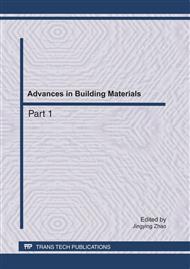p.1161
p.1167
p.1172
p.1178
p.1182
p.1191
p.1196
p.1201
p.1206
Numerical Analysis Method for Dynamic Stability of a High and Steep Rock Slope in the Sichuan Wenchuan Earthquake
Abstract:
Near-field ground shock features are analyzed according to the seismological record of the May 12 Wenchuan earthquake made at the Wolong observation station. A numerical analysis model is established by taking the record as the input seismic load and a real high and steep rock slope on the bank of the Zipingpu Reservoir. The acceleration response and shear strain increment distribution features at different locations of the slope under horizontal seismic force are analyzed using Plaxis software. The moment when the widest plastic zone occurs for the slope is obtained by time history analysis. The corresponding stability factor of the slope at that moment is calculated using the strength reduction method (including shear strength and tensile strength). The above is the Time History Analysis–Strength Reduction Method presented in this article. In addition, the stability factor of the slope can be calculated using the pseudostatic method by taking the seismic force as the external load. This is the Time History Analysis–Pseudostatic method put forward in this paper. Analysis results demonstrate that, as far as the studied high and steep slope is concerned, at 31.89 s, the stability factor calculated with the Time History Analysis–Strength Reduction Method is 1.004, which is slightly larger than the 0.833 obtained using the Time History Analysis–Pseudostatic Method (Spencer method). Both results demonstrate that there is collapse and sliding failure of the localized rock mass at the top of the slope at that moment because of joint fracture. Field investigation after the earthquake further verified the calculation result, proving to a certain degree the rationality of the analysis method presented.
Info:
Periodical:
Pages:
1182-1190
Citation:
Online since:
May 2011
Authors:
Price:
Сopyright:
© 2011 Trans Tech Publications Ltd. All Rights Reserved
Share:
Citation:


